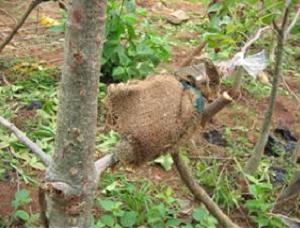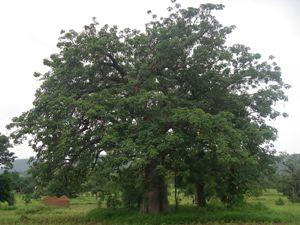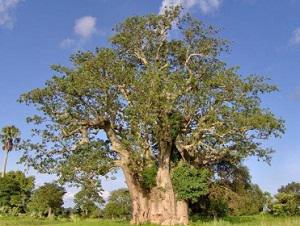Achille Ephrem Assogbadjo
Other projects
26 Jul 2010
Promoting the Domestication and the Sustainable Use of the Endangered and Multipurpose Baobab Tree in West Africa
This project on A. digitata will set the tone for similar studies on many other threatened edible plant species.

Baobab layering (air and soil) in nursery condition.
Millions of the world’s poor rely on a wide variety of forest products to sustain their livelihoods. At the same time, most agricultural crops have been domesticated over a long period of time while very few forest tree species can be considered as domesticated.

The Baobab tree with leaves in rainy season.
Among the non-domesticated plant species, baobab tree (Adansonia digitata) is a multipurpose, widely-used species with medicinal properties, numerous food uses of various plant parts, and bark fibres that are used for a variety of applications. The species is classified by the International Plant Genetic Resource Institute (IPGRI) within the most important edible forest trees to be conserved and domesticated in Benin. To date, the species is facing regeneration problems and threatened in the parkland agroforestry systems of Benin by bush fire, agriculture, grazing and overexploitation.

The Baobab tree without leaves in dry season.
Although A. digitata is not listed in the Red List of Benin plants, it is one of the most threatened edible plants in the country. This research aims at combining modern molecular tools and traditional anthropological ethnobotanical methods to develop optimal strategies for making a better use of baobab in Benin. Specifically, it will consist in (i) ethnobotanical survey, (ii) germplasm collection for molecular analyses; and (iii) seed longevity and germination tests in order to see the potential for domestication and encourage its propagation.

Baobab tree.
The use of molecular markers that quantify the genetic diversity within and between accessions as well as the ethno-knowledge on the species, may significantly increase the efficiency of the assessment and management of baobab germplasm. This could also help to get important information for assembling a core collection of baobab germplasm, taking into account the hierarchical structure of the gene pool. In situ conservation would be done with local populations’ participation as natural gene pool or parent seed bank stand in representative localities or units of conservation. As such, improved sustainable integrated crop systems could be developed and proposed to households for introduction in and through agroforestry systems.
This project on A. digitata will set the tone for similar studies on many other threatened edible plant species. It will provide the forestry department and other NGOs strongly involved in nature conservation with technical information for defining sustainable management plans of the species.